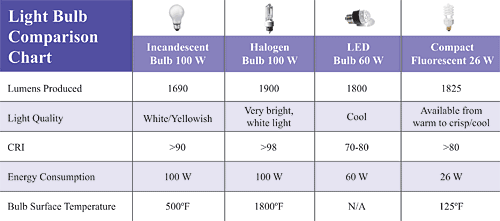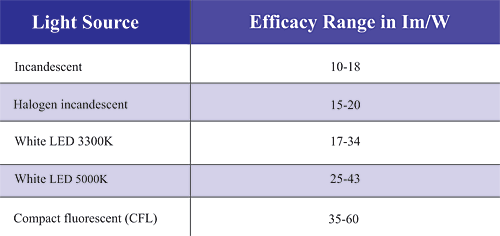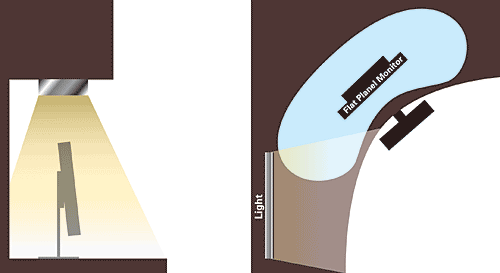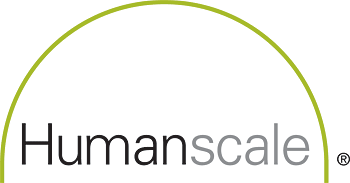Task Lighting Solutions: Their Economic and Ergonomic Benefits
|
LED Lighting
The next generation light source to make headlines is solid-state LED lighting. Around since the 1960s, it has only relatively recently been marketed for commercial interiors because of its apparent energy efficiency and other features. Approximately one-quarter-inch in diameter, each diode uses about one-tenth of a watt to operate and can be assembled together to deliver higher intensity light. LED fixtures require a plug-in transformer or a driver-typically built-in-which is comparable to the ballast in fluorescent fixtures. The plug-in transformer used for portable fixtures, enables the lamp to use 120 volt AC.
LED lights are more rugged and damage-resistant than compact fluorescents and incandescent bulbs. They do not flicker, are low maintenance, dimmable and-what makes them especially attractive to those seeking LEED certification-have the potential of low energy consumption. Since they operate at 3300 to 5000 Kelvin (sunlight at sunrise is 1800K, overcast sky is 6500K) they have a "cool" color that ranges from blue to daylight fluorescent.
|
Many designers are now specifying LED lighting because they believe that it is the most energy efficient lighting solution available. Unfortunately, there is much misunderstanding surrounding this new technology. While there are considerable potential advantages to solid-state lighting, the technology is not sufficiently advanced to make it an energy efficient choice at present.
The major cause of misunderstanding results from there being no standard testing criteria. In their product literature, manufacturers use different evaluation criteria to compare their LED products with traditional fluorescent or incandescent lighting. Another difficulty in testing existing LED luminaires is their susceptibility to colorshift and inadequate performance when subject to high heat (some manufacturers have added fans and diffusers to disperse heat.)
After a pilot round of testing several LED products, the U.S. Department of Energy released its conclusions in December 2006. It found that products fell short of manufacturers' claims and implied that claims are based on how much light isolated LED produces rather than how much light an LED fixture actually delivers. The study concluded that "solid-state based luminaires (lighting lamps or fixtures) have the potential to provide high-quality light which consumes far less energy than more traditional lighting technologies, but recent testing of commercially available products show that some being sold today actually provide less light output than traditional light sources and are less efficacious than products using fluorescent light sources."
U.S. Department of Energy testing found that LED bulbs with a temperature of 3300K are about half as energy efficient as standard compact fluorescents (17−34 lumens/watt versus 35−60 lumens/watt for compact fluorescents). Higher temperature LED bulbs (5000K) were somewhat more efficient, but still well below the efficiency of CFLs. Moreover, LED bulbs are not ideal for task lighting because the color is too cool (blue) for most users. In other words, LED products now on the market use more energy and provide less light than their compact fluorescent counterparts.
Meanwhile, researchers are addressing the issue of testing criteria and comparison methods. "We have developed technology-neutral, fixture-based testing methods that allow fixtures of the same type but with different light sources to be compared appropriately," says N. Narendran, Ph.D. of the Lighting Research Center at Rensselaer Polytechnic Institute and director of research and organizer of the Alliance for Solid-State Illumination Systems and Technologies (ASSIST).
|
At some point, perhaps in another two to three years, LEDs will overtake CFLs in efficiency because LED technology is improving. But for now, CFLs are clearly the best solution in terms of energy efficiency.
Task Lighting Saves Eyes
Because they are closer to the work surface, positionable task lights are a considerably more effective means of lighting a desktop than are overhead fixtures, which are costly and inefficient. They can be directed to light documents or moved to avoid screen glare.
"The most common design error, clearly, is the mismatch between where light is being delivered and where people are utilizing that light," says Hedge. "All too often we put light into a building without knowing the ultimate layout. Even if the layout is known, things can happen that are not foreseen. Offices may be partitioned differently by new tenants, for instance, and the new layout can result in a feast or famine situation, so far as light is concerned. Some workers may complain of glare and headaches; some may be in the dark."
In a study conducted in 1990, Cornell researchers drew on an American Society of Interior Designers survey in which 68 percent of employees complained about the light in their offices and 79 percent of VDT users wanted better lighting. The Cornell study came to the conclusion that eyestrain was the number one health hazard in the workplace-ahead of radiation, asbestos, or exposure to AIDS.
Hedge says eyestrain remains the number one complaint in the office environment, and the degree of dissatisfaction is difficult to ignore. It confirms the need to identify the best available methods of lighting. "Combined ambient-task lighting is likely to be the most effective solution in any environment in which workers are doing both paperwork and computer work," says Hedge.
|













